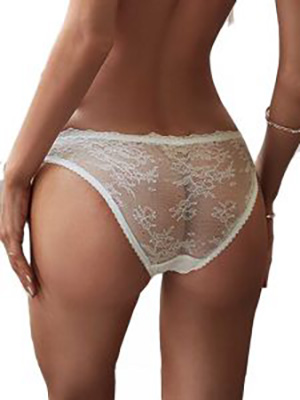
After two months of this, I had enough, but I didn’t have the guts to walk out or say anything to my colleagues.
Things came to a head when we had to do the financial forecasts for the departments, in at Six each day, typing figures until Nine in the evening. No conversation, No Breaks, just solid concentration. At least I wasn’t bored.

But, a few weeks later as the reports were signed off, a few errors were noticed, just two: A decimal point was missed off a figure and so the report was several pounds off, I was blamed and my life was made more hell.
With no work to do I would sit at my desk for hours, watching as every second ticked by. The pain of watching 1pm turn into 5pm was agony.
My hours got worse and after a few weeks I had to make up the time by staying late on my own.

Now, this wasn’t such a bad thing, as I had a fax machine next to my desk.
Why is this an advantage?
Well, in the company I worked for, fax machines are not barred from any outside lines, and I had access to all the 0891 and 0898 numbers.
Knowing myself very well, I knew the thought of dressing in feminine attire was a great turn on, and so I would call all the TV lines I could think of. I would draw the blind and let my cock out, and wank off like crazy.
But was the only advantage to the job, and after a while it got kinda dull.
But things were conspiring against me..
One day I was driven to a different part of the country to do some legal work. Basically it was photocopying lots of legal documents and stamping each corner with a number. Dull was not the word. To liven things up a bit, I started writing the numbers on in different coloured pens and in different ways. A backwards 27, an upside down 128, even a misspelt 1076.
This did not go down well, the court case was tomorrow and the papers were the only copies. I was driven back, told to empty my desk and was promptly escorted out the building.
To be honest I wasn’t that bothered, to have lots more free time was great. So, I wouldn’t have any money. But at least I could fall back on the dole for a bit.
A few weeks later, on what would have been payday, I walked into town and checked my Balance, 750 pounds!
It transpired that my old Boss had felt sorry for me and arranged for me to have two Months Pay because of Christmas. I sent her a thank you card, and decided to blow it.
THAT MONDAY
 I had wante02d to get a new Television for a long time, the one I had was getting on in years and didn’t have a good picture. My friend was able to modify my Megadrive so that I could play games full screen and a lot faster only problem was, I needed a Scart socket on the back for it to work.
I had wante02d to get a new Television for a long time, the one I had was getting on in years and didn’t have a good picture. My friend was able to modify my Megadrive so that I could play games full screen and a lot faster only problem was, I needed a Scart socket on the back for it to work.
So, Armed with lots of cash I wondered into town.
I found the television I was after and after some discussion, arranged to pick it up later that afternoon. I paid cash and was about to walk out when the assistant handed me two tokens.
“It’s a special offer” he said “Spend 100 pounds and get 20 pounds cash back”
My brain raced, what did I need that was worth 60 pounds… Nothing. Time to go mad!!
Wondering around, trying to spend this money, I found myself in the lingerie department.
I suffered a sort of obsessive/compulsion and knew that, amongst the soft sensual materials there was something I would like. With 60 quid I could get something and feel no guilt at purchasing it.
 I made myself a promise. If I could do this, I could do anything. I had declared a personal challenge.
I made myself a promise. If I could do this, I could do anything. I had declared a personal challenge.
So, I browsed through the feminine finery with the intention of buying something for myself, my first item of lingerie.
After an age of choice, I found my heaven.
A Basque!
That wonderful item of corsetry, Nothing else would do. None of the silks or satins would fulfil me as much as that wonderful silk creation.
As I choose my Basque, I found the one of my fantasies, the one, which I had been dreaming of. Black and Red, with a short underskirt, four suspenders and a lovely pair of silky panties to match. I pulled the hangar out and promptly paid for it.
This was the moment of truth. Walking to the till with my purchases in my hand.
I played the embarrassed boyfriend.
 The assistant, a kindly faced old lady didn’t bat an eyelid, she simply commented that it was “Very pretty” and put it in a bag, which promptly went into my rucksack.
The assistant, a kindly faced old lady didn’t bat an eyelid, she simply commented that it was “Very pretty” and put it in a bag, which promptly went into my rucksack.
With a smile I paid for it with and asked the assistant if I could return it
“Of course” She said, “Simply give her the receipt!”
Her… I liked that. If only she knew what I was up to!
As I walked to collect my television, my cock getting huge with anticipation, I suddenly remembered that I had forgotten the most important thing… Stockings!
How could I have been so silly to forget such an important item?
With my newfound bravery I did what I had thought impossible earlier. I walked into the lingerie shop on the main street and asked the assistant for some “Black Seamed Stockings” after and agonising browse through the finery, she finally pulled out a pair.
They were lovely. It took all my will power not to stare at them.
“Thank you” I said bravely as I paid for them
“Do you know if they are for evening wear?” asked the assistant.
 I made something up and fled. I think the assistant knew exactly what I was doing. To be honest I didn’t really care. I was now so confident I think I could have changed into it on the street!
I made something up and fled. I think the assistant knew exactly what I was doing. To be honest I didn’t really care. I was now so confident I think I could have changed into it on the street!
I then walked into Sainsburys and bought myself some snacks for the afternoon. I had got a video from the local shop earlier and I always liked to stuff myself silly.
Walking to the till, I “Happened” to wander through their lingerie department. Thinking that the stockings I had would be for “Special” occasions I got myself a pack of cheap everyday ones. The assistant gave me a strange look as I paid for them but I ignored it.
I got a taxi back home, and lugged the television into my room. Yes it worked; I had a buyer for my old Television, so I had more mad money.
After disposing of the packaging and making sure that my parents were definitely out and not likely to back for some considerable time. I unpacked my new underwear and admired it. I carefully found a place to stow the silky creations and drew myself a hot bath.
Obviously I wanted to get the feel of the new clothes as intense as possible, so I snuck into my parents room and borrowed my Mothers Ladyshave.
10 minutes later my chest, arms and legs were silky smooth. I rubbed moisturising cream into them to get them even smoother and softer.
“But what about my cock?” I thought.
It was painful and slow progress, but eventually I had a smooth pubic area, and a lovely soft cock and balls. The cream felt wonderful as it coldly went on my skin, causing me the first of many erections.
At that point I decided that my cock looked so feminine that it shouldn’t be called such a nasty male name. This was my attempt to feminise myself and so I decided to name it my ‘Clittie’ and when it got stiff, it was being naughty.
I got in the bath, and loved the feel of the water on my new soft skin. I rubbed my legs, wondering what the stockings would feel like against them. With this thought, my ‘Clittie’ got so stiff. I wanted to wank myself off; again I didn’t want such a crude male name for relieving myself, so I re-named it. ‘Rubbing myself to climax’. I decided to leave it till much later.
I thought of how to rub myself off. In one video I had seen, a woman masturbated by rubbing herself through her panties, I decided my first time in panties would be erotic and so I decided that I would do the same. The panties WOULD NOT come off until I came in them.
I got out of the bath and carefully dried myself off. More cream on my legs, chest and of course my Clittie and I was soft and smooth again.
I walked, naked into my room, and prepared the items on my bed.
Savouring the moment, I put on a relaxing CD and considered that this would be my first experience of lingerie. Something I had been waiting for, for a long, long time.
With a big smile I UN-hooked the Basque at the back and pulled it around me.
 The first touch on my soft skin was electric. It seemed to stimulate every nerve ending, as the soft material caressed every square inch of my skin. I put my shoulders through the thin straps and placed two water filled balloons into the cups of the Basque to give me breasts, although they were slightly Cold, I should have used the Warm tap, they would soon warm up.
The first touch on my soft skin was electric. It seemed to stimulate every nerve ending, as the soft material caressed every square inch of my skin. I put my shoulders through the thin straps and placed two water filled balloons into the cups of the Basque to give me breasts, although they were slightly Cold, I should have used the Warm tap, they would soon warm up.
The new weight on my chest, confided securely by the Basque felt very sexy indeed, and I am ashamed to admit that my Clittie got very stiff indeed. I allowed myself this indiscretion as I knew the little thing was very excited.
So Was I.
At that moment, I wanted to pull my clit out and wank it really hard until I came, not once, or twice, but hundreds of times. I squashed the thought and waited until she was soft again.
The next item was the lovely panties. I carefully examined them before they went on. The front was of a lacy, slightly see-through finish and the back was composed completely of black satin.
They felt so soft and sensual in my hands, I had to put them on right at that moment.
I stepped into them, and noticed with disgust that my Clittie had gotten really stiff again. This time, I wasn’t going to stand for it, and so I put her tightly between my legs, and pulled the panties quickly up.
 I pulled them up over my hips, and smoothed them into position.
I pulled them up over my hips, and smoothed them into position.
That moment will stay with me for the rest of my life. At that moment I wanted to be a woman full time, they can experience such lovely fabric next to their beautiful skin every day.
I don’t think I actually did very much for the next 5 minutes, except stand in amazement. I didn’t care that I probably looked horrible in the lingerie, I didn’t care that it was “wrong” all I knew that these panties had transported me to a world of soft pleasure.
I broke myself from my trance and unpacked the stockings. Not the everyday ones, this was a special occasion and so I chose the seamed ones.
I pulled the first slowly up my smooth leg, loving the caress of the material against my skin. I pulled my suspenders through the side of my panties and clipped the tops.
I repeated the exercise on the other side. I loved the extra weight I had when I bent over.
“So this was what it must be like to be a woman!” I thought.
That afternoon I spent hours lying on my bed, with my eyes closed just rubbing myself through the panties. Every stroke was a descent further into luxury. Several times I was close to climaxing but I held back for as long as I could.
The clocks span round until it showed 4:45. My parents would be home very soon and I had to finish off quickly.
I rubbed myself with more vigour, not quickly, but determinedly I wanted to come… NEEDED to come.
Then, it happened.
My Clittie, so turned on by the whole situation, sprang into life and sprayed a bucket load of cum into my panties. It filled them to capacity. But I didn’t care. My orgasm was intense. I lay back for several moments, overcome with the intensity of it all. My Basque, stockings and panties were all in need of a good wash.
 I carefully stripped all my lingerie off and hid it in the little nook I had discovered.
I carefully stripped all my lingerie off and hid it in the little nook I had discovered.
My male clothes felt so silly on my lovely skin. But I had to wear them.
As my parents came in they asked me
“Did you have a nice day?”
“Not bad!” I replied.